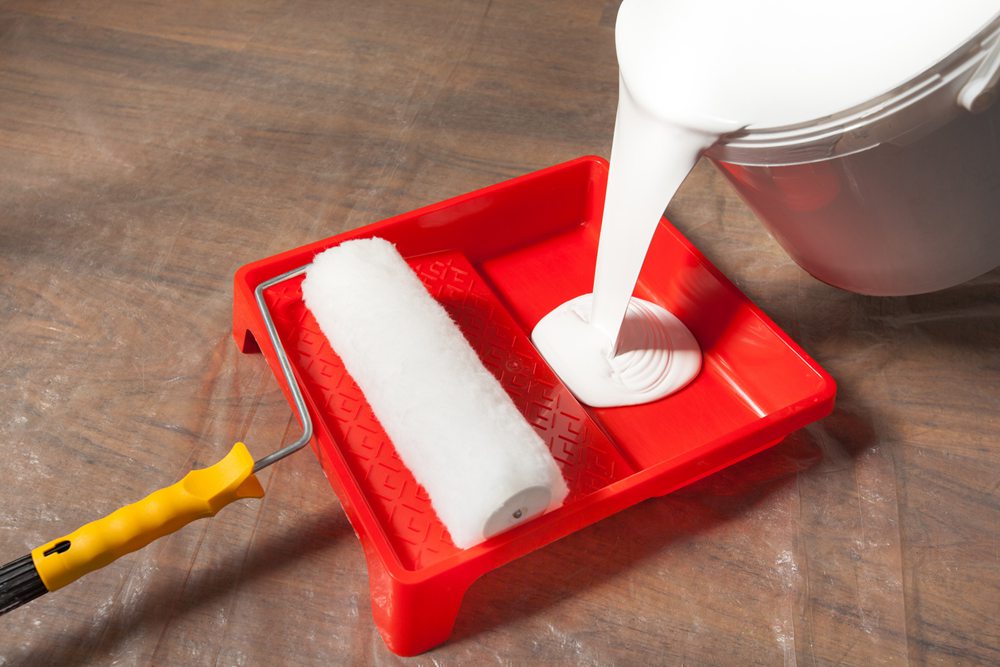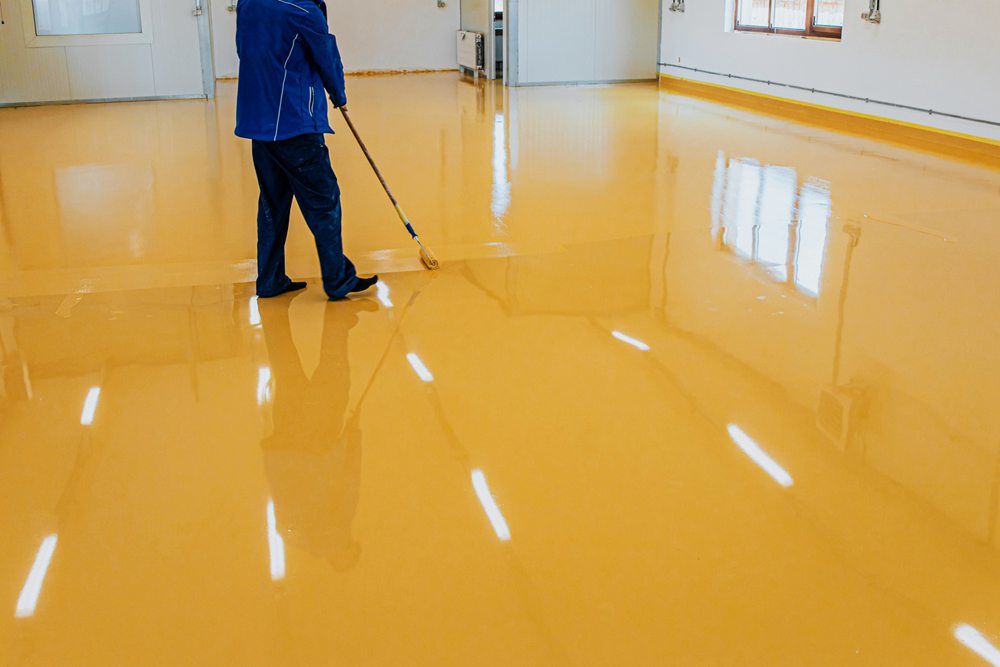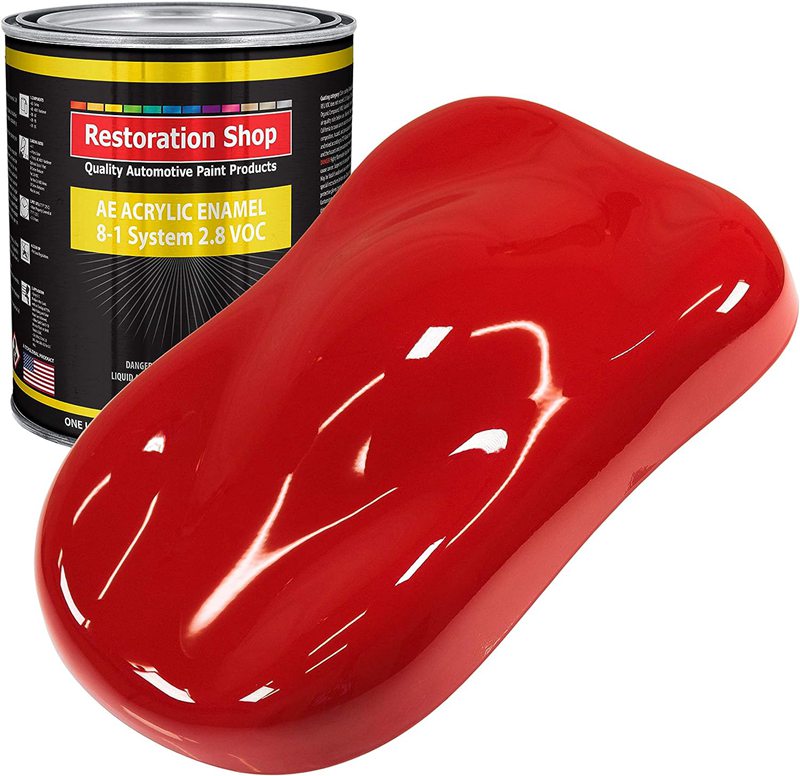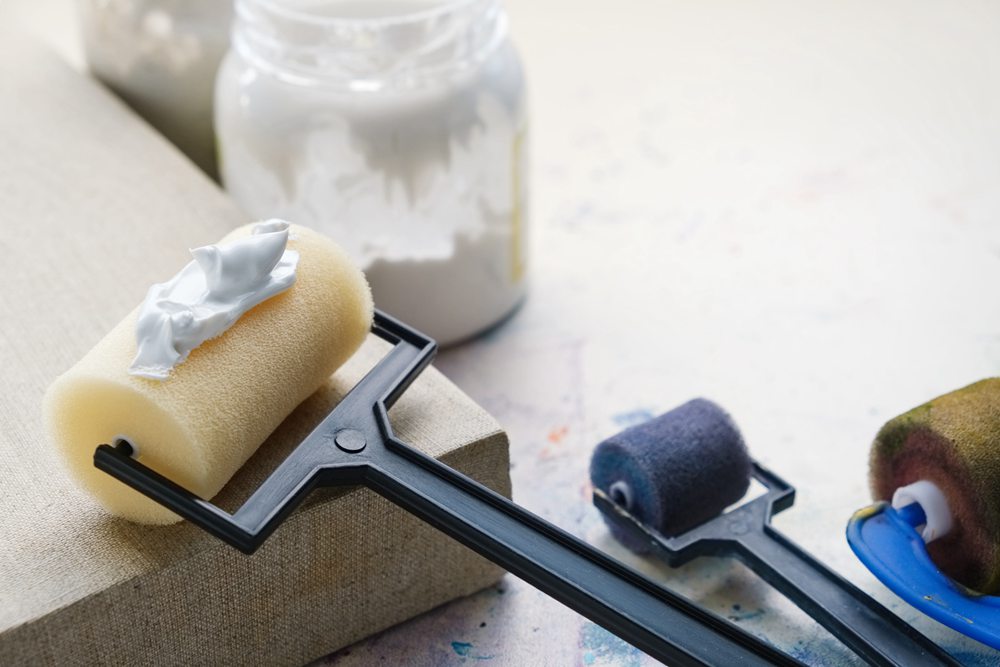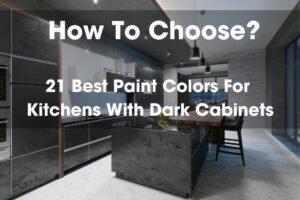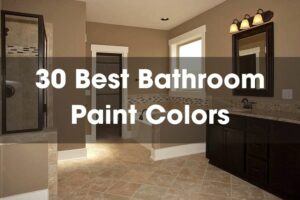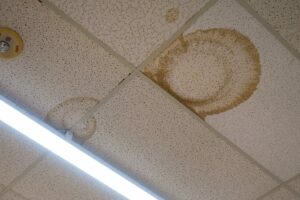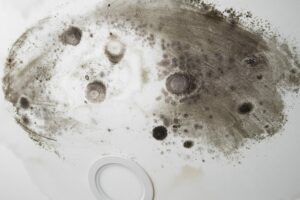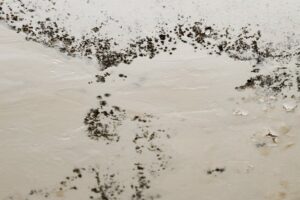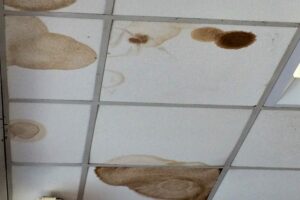When it comes to painting the ceiling in your bathroom, you want to choose a paint that will hold up to the humidity and potential for mold/mildew growth that bathrooms are notorious for. The ceiling paint also needs to be durable and scrubbable to deal with condensation and soap scum build up over time. In this article, we’ll compare the best options for bathroom ceiling paint so you can decide which type is right for your needs and budget.
Table of Contents
Factors to Consider When Choosing Bathroom Ceiling Paint
There are several factors to take into account when selecting the right paint for your bathroom ceiling:
Humidity Resistance
Bathrooms tend to have high humidity levels from hot showers. You need a paint that can resist moisture and prevent peeling, cracking or bubbling on the ceiling.
Mold/Mildew Resistance
The warm, humid conditions in bathrooms also promote mold and mildew growth. It’s important to choose a paint with antimicrobial properties to inhibit mold and mildew.
Scrubbability
Being able to occasionally scrub the ceiling to remove soap scum and condensation build up is important. Opt for an interior paint with “scrubbable” properties.
Reflectivity
A paint with high reflectivity will help brighten up the bathroom. Light colors or ceiling paint with a built-in reflective additive are ideal for reflecting light.
Coverage
Bathroom ceilings tend to need more frequent repainting. Select a top quality paint with good coverage that won’t require as many coats.
The Top Bathroom Ceiling Paint Options
Now let’s dive into the specific types of paint to consider for your bathroom ceiling:
Latex Paint
Latex paint, also called acrylic paint, is water-based paint made from acrylic resins. It’s one of the most common and affordable types of paint for home interiors.
Pros
- Budget-friendly option
- Dries quickly
- Low odor
- Easy cleanup with water
- Available in flat, eggshell, satin, and semi-gloss sheens
Cons
- Not as durable as other paint types
- Requires priming for new drywall
- Prone to growing mold in humid bathrooms
Best Uses
Latex paint works best for bathrooms with good ventilation that limits humidity. The budget price makes it a good choice for bathrooms that will be repainted frequently. It can be used on previously painted drywall and ceilings.
Cost
- $20-$35 per gallon
- For a 10′ x 10′ ceiling:
- 1 gallon covers 400 sq ft
- You will need ~1 gallon
- Total cost = $20-$35
Epoxy Paint
Epoxy paint has a tough, glossy finish made from epoxy resins mixed with polyurethane. It forms a plastic-like coating over surfaces.
Pros
- Extremely durable and moisture resistant
- Resists yellowing and fading
- Withstands scrubbing without damage
- Seamless finish hides imperfections
- Adds brightness from gloss
Cons
- Expensive compared to other paints
- Requires skill to apply smoothly
- Strong fumes during application
- Surface needs sanding between coats
- Can yellow over time
Best Uses
Epoxy paint is the best choice for humid, wet bathrooms that need maximum protection from moisture. Its impervious finish prevents water damage, mildew, and stains. It will last for many years with proper surface preparation.
Cost
- $50-$100 per gallon
- For a 10′ x 10′ ceiling:
- 1 gallon covers 400 sq ft
- You will need ~1 gallon
- Total cost = $50-$100
Oil-Based Paint
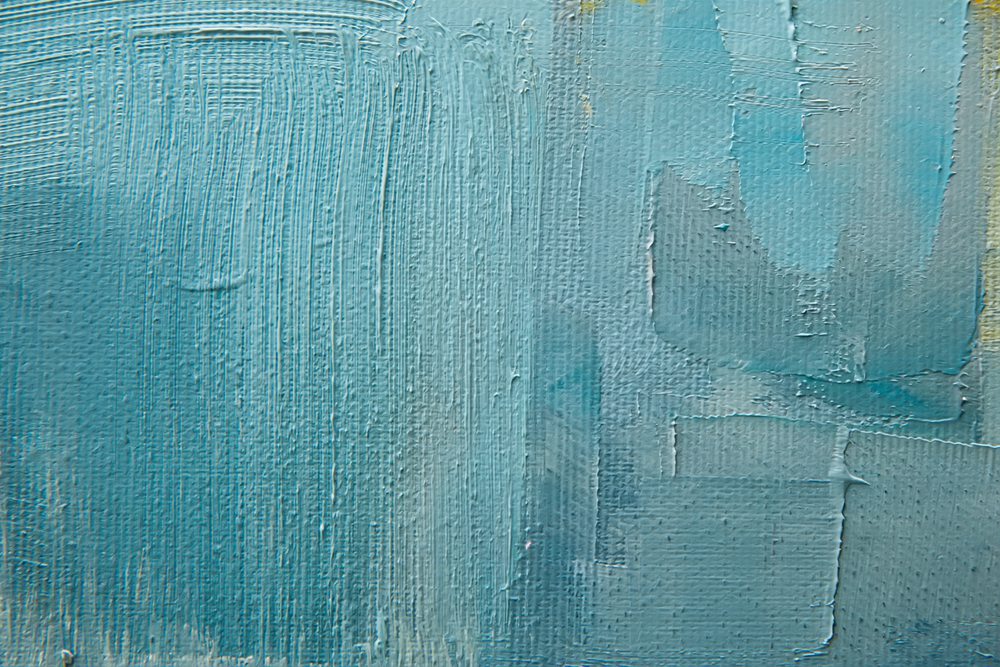
Oil-based paints use alkyd resins suspended in petroleum solvents. The paint dries to a hard, glossy finish.
Pros
- Very durable and moisture resistant
- Resists yellowing
- Provides a smooth, glass-like finish
- Can cover surfaces in poor condition
Cons
- Strong odor during drying
- Requires mineral spirits for cleanup
- Long drying time
- Yellows over time
- Limited availability due to VOC regulations
Best Uses
Oil-based paint works well for coating damaged bathroom ceilings that need total sealing from moisture. The hard finish resists scrubbing. Proper ventilation is needed during application and drying.
Cost
- $35-$45 per gallon
- For a 10′ x 10′ ceiling:
- 1 gallon covers 400 sq ft
- You will need ~1 gallon
- Total cost = $35-$45
Enamel Paint
Enamel paint has an extra smooth, glossy finish. Traditional enamel uses alkyd resins like oil-based paint, but latex and epoxy versions are also available.
Pros
- Extremely durable and scrubbable
- Resists moisture, stains, and dirt
- Glass-like surface is easy to clean
- Can be oil or water-based
Cons
- Long drying time, especially for oil-based
- Strong odor, especially oil-based
- Surface imperfections show under gloss
- Most expensive option
Best Uses
Enamel paint is ideal for bathrooms that need to stand up to lots of moisture and frequent scrubbing and cleaning. It creates a stain and water resistant barrier. Proper priming and preparation is essential for good results.
Cost
- Oil-based: $45-$60 per gallon
- Latex: $25-$40 per gallon
- Epoxy: $50-$100 per gallon
- For a 10′ x 10′ ceiling:
- 1 gallon covers 400 sq ft
- You will need ~1 gallon
- Oil-based total cost = $45-$60
- Latex total cost = $25-$40
- Epoxy total cost = $50-$100
Mold-Resistant Paint with Primer
Mold resistant paint has additives that prevent mold and mildew growth on the paint film. Many come formulated with a primer already added.
Pros
- Inhibits mold and mildew growth
- Primer provides better adhesion
- May reduce need for regular repainting
- Often low VOC options available
Cons
- More expensive than regular paint
- Additives may affect finish or application
- Mold can still grow if excessive moisture isn’t addressed
Best Uses
Mold-resistant bathroom paints help prevent mold growth but don’t solve underlying moisture issues. They are useful for bathrooms prone to high humidity and condensation. The primer helps new paint stick better.
Cost
- $30-$50 per gallon
- For a 10′ x 10′ ceiling:
- 1 gallon covers 400 sq ft
- You will need ~1 gallon
- Total cost = $30-$50
Key Paint Comparison Factors
To help you choose the best ceiling paint for your bathroom, here is a comparison of some of the key differentiating factors:
| Paint Type | Durability | Moisture Resistance | Application | Drying Time | Odor | Cost |
|---|---|---|---|---|---|---|
| Latex | Fair | Moderate | Easy | Fast | Low | $ |
| Epoxy | Excellent | Excellent | Difficult | Slow | Strong | $$$ |
| Oil-Based | Excellent | Excellent | Moderate | Very slow | Strong | $$ |
| Enamel | Excellent | Excellent | Moderate | Slow | Strong | $$$ |
| Mold-Resistant | Good | Very good | Easy | Moderate | Low | $$ |
Comparing Bathroom Ceiling Paint Sheen Options
Let’s examine the unique characteristics of the most common ceiling paint sheens:
Flat/Matte Finish
- Little to no shine with a non-reflective, velvety appearance
- Excellent at hiding imperfections like cracks and textured areas
- Diffuses light nicely and reduces glare
- Susceptible to dirt and stains
- Not scrubbable or washable
- Ideal for low to average height ceilings
Eggshell Finish
- Soft, low-sheen appearance, more than flat/matte but less than satin
- Provides decent stain resistance and scrubbability
- Hides minor imperfections better than satin or semi-gloss
- Washes and touches up easier than flat
- Works well for average to tall ceilings
Satin Finish
- Mid-range sheen with slight pearl-like glow
- Shows more sheen and reflects more light than eggshell
- Resists dirt better than flat but not as easily cleanable as semi-gloss
- Bring out details like small cracks and textures
- Best for taller, smoother ceilings without imperfections
Semi-Gloss Finish
- Noticeably shiny surface with bright, slick appearance
- Reflective sheen amplifies light
- Enhances architectural details and depth
- Most durable and washable sheen
- Can overly emphasize surface flaws on textured ceilings
- Ideal for tall, flawless ceilings
High-Gloss Finish
- Very shiny, slick, and reflective surface
- Reflects the most light and sharply amplifies textures
- Most scrubbable with greatest stain/moisture resistance
- Can look too glossy; shows every imperfection
- Avoid on low ceilings with any visible flaws
- Only suitable for very tall, ultra-smooth ceilings
Sheen Recommendations by Bathroom Ceiling Material
The ceiling material itself also impacts the ideal sheen choice:
Drywall Ceilings
For standard drywall bathroom ceilings, flat or eggshell paints are good choices to conceal joints, screws, and imperfections. Satin works for smooth, higher drywall ceilings but shows more flaws. Semi-gloss and high-gloss exaggerate drywall defects.
Plaster Ceilings
Because plaster ceilings have a textured appearance, flat or eggshell sheens look best. They’ll hide uneven plaster while providing some reflection. Satin can be used on very smooth plaster ceilings over 9 ft. high.
Concrete Ceilings
Concrete bathroom ceilings benefit from flatter paint sheens like flat or eggshell since the material’s natural texture shows through more glossy finishes. Satin could work on flawless concrete but semi-gloss and high-gloss are not ideal.
Wood Ceilings
For bathroom ceilings with exposed wood beams or planks, choose flat or eggshell sheen. The low reflection helps retain the natural look of the wood. Satin will bring out wood grain but may look too glossy. Avoid semi-gloss or high-gloss on wood.
Sheen Recommendations by Bathroom Type
Here are sheen recommendations based on common bathroom types:
Primary Bathroom
As the main bathroom with nice lighting and finishes, primary bathrooms can handle some sheen on the ceiling. Eggshell and satin are both good choices here. For textured ceilings, stick to eggshell. Use satin only on higher, flawless ceilings.
Secondary Bathroom
Secondary bathrooms tend to be smaller with more utilitarian finishes. A flat or eggshell sheen is best for hiding flaws on these lower, basic ceilings. Satin could work for tall, perfect ceilings.
Powder Room
Powder rooms deserve a bit of sheen since they are viewed largely as decorative spaces. Eggshell and satin are ideal sheens here for providing some reflection while minimizing imperfections. Flat is also fine for powder rooms with textured ceilings.
Basement Bathroom
Basement bathroom ceilings are often low and can have exposed ducts, pipes, and concrete. A flat paint sheen is the best bet for hiding flaws. Eggshell is also acceptable, but satin and above will overly amplify imperfections.
Kids’ Bathroom
Kid and family bathrooms need durable, scrubbable paint to withstand moisture and cleaning. Eggshell or satin sheens are ideal here. Flat hides stains but is harder to clean. Use satin for smoother ceilings and eggshell for textured.
Ceiling Paint Sheen Recommendations Cheat Sheet
Here is a quick reference cheat sheet for recommended bathroom ceiling paint sheens:
| Ceiling Type/Details | Best Sheen Choice | Second-Best Sheen | Avoid Sheen |
|---|---|---|---|
| Standard drywall | Flat or Eggshell | Satin (if tall/smooth) | Semi-gloss or High-gloss |
| Textured drywall | Flat | Eggshell | Satin or above |
| Plaster | Flat or Eggshell | Satin (if 10+ ft. high) | Semi-gloss or High-gloss |
| Concrete | Flat or Eggshell | – | Satin or above |
| Exposed wood | Flat | Eggshell | Satin or above |
| Primary bathroom | Eggshell | Satin | Flat or Semi-gloss |
| Secondary bathroom | Flat or Eggshell | Satin (if tall/perfect) | Semi-gloss |
| Powder room | Eggshell or Satin | Flat | Semi-gloss or High-gloss |
| Basement bathroom | Flat | Eggshell | Satin or above |
| Kid’s bathroom | Eggshell or Satin | – | Flat or Semi-gloss |
Compare Top Ceiling Paint Brands
When selecting a brand of paint, you generally get what you pay for in terms of quality and longevity of the paint. Here is an overview of some top brands for ceiling paint:
| Brand | Pros | Cons | Price Range* |
|---|---|---|---|
| Behr Premium Plus | Wide color selection Scrubbable Good stain resistance Low VOCs 100% acrylic | Prone to lap marks Satin less durable than semi-gloss | $30–$50 per gallon |
| Benjamin Moore | Extremely durable Low odor Scrubbable 100% acrylic paint Lifetime warranty | Expensive High sheen shows imperfections | $50–$70+ per gallon |
| Sherwin Williams | Withstands scrubbing Antimicrobial Good for humidity Resists yellowing Durable finish | Strong paint odor Expensive | $60–$80 per gallon |
| PPG Timeless | 100% acrylic Thick coverage Scrubbable stain-resistant Antimicrobial Excellent uniformity and touch-up | Limited color choices High cost | $70–$100+ per gallon |
| Valspar | Multiple sheens available Good scrubbability and stain resistance Low VOCs Antimicrobial Mold/mildew resistant Lifetime limited warranty | Lower coverage Satin not as durable as semi-gloss | $35–$50 per gallon |
| KILZ | Seals surfaces Approved for bathrooms Scrubbable Good uniformity Affordable price Mildew resistant | Limited finish options Brushstrokes may show | $25–$40 per gallon |
| Rust-Oleum Zinsser | High-hiding mildew resistant Scrubbable Good for moisture prone areas Affordable Sticks to glossy surfaces Easy application Low odor Fast drying | Thinner than some paints Prone to lap marks | $25–$35 per gallon |
*Estimated paint prices do not include discounts, sales or coupons available at major home improvement stores.
When choosing a brand, prioritize mold/mildew resistance and durability first for bathroom applications. Top tier paints from Benjamin Moore and Sherwin Williams offer outstanding performance, but also carry a higher price tag. Options like Behr Premium Plus and Valspar also deliver reliable quality at moderate cost.
FQA About Painting Bathroom Ceilings
Still have some questions about choosing paint for your bathroom ceiling? Here are answers to some frequently asked questions:
What sheen of paint is best for a bathroom ceiling?
Flat or matte finishes are typically recommended for ceilings. They help hide imperfections and provide a subtle finish. Avoid glossy paints that can draw attention to flaws.
What color should I choose?
White is the most common bathroom ceiling color since it makes the space feel bright and clean. You can also consider “ceiling white” paints that have a blue undertone to counter yellow lighting.
How long does bathroom ceiling paint need to dry?
Most bathroom paints are dry to the touch within 1-2 hours. Fully curing and hardening can take up to 30 days. Avoid steam, condensation, and scrubbing during this period.
How do I get rid of mildew on a bathroom ceiling before painting?
Mix 1 part bleach to 3 parts water and scrub affected areas. Rinse thoroughly and allow to fully dry before priming and painting. Be sure to wear gloves and ventilation.
Should I use a sealer when painting a bathroom ceiling?
Sealers provide added water repellency but aren’t always needed with quality bathroom paints. They add cost and work best on porous surfaces like drywall and plaster.
Key Takeaways
Choosing the right paint is critical for getting a durable, moisture-resistant finish on your bathroom ceiling. The top options include:
- Latex paint for a budget-friendly solution
- Enamel paint for hardness and stain resistance
- Epoxy paint for supreme moisture protection
- Mold-resistant paint to inhibit mildew growth
Prep work, proper application, ample dry times, and ventilation are also important to ensure the paint sticks. With the right ceiling paint for your bathroom, you can get a finish that withstands humidity and lasts for years before needing touch-ups.



